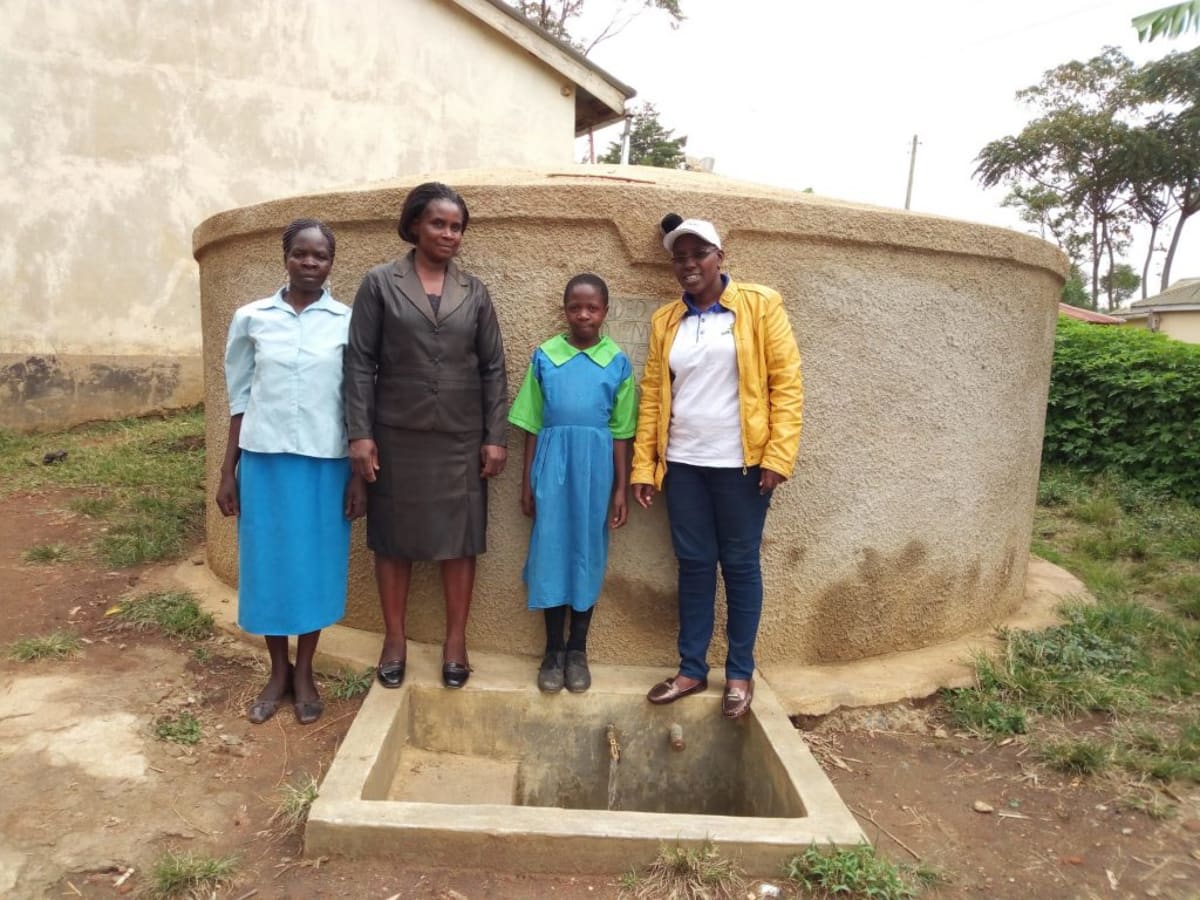This project is a part of our shared program with Western Water And Sanitation Forum (WEWASAFO). Our team is pleased to directly share the below report (edited for clarity, as needed).
Welcome to the School
A normal day at Musunji Primary School begins at 6am when students prepare themselves for school. When ready, they first set out to find water to fill their jerrycan. If they don't fetch enough water on their way to school, they'll be sent out to find more later.
After morning study hall from 7am to 8am, they immediately start cleaning their classrooms and latrines in preparation for normal classes. Normal classes begin at 8am and go until lunch at 12:45pm. Most students are dismissed to return home to eat lunch with their families. When they return at 2pm, all the pupils from upper classes are asked to carry more water back to school. This is to help them clean their classrooms again in the evening. This school is unique because during game time after classes, pupils separate into different classrooms again for clubs. There is Christian Union Club, debate, home science club and 4K club.
Current student enrollment stands at 590, and the school employs 16 teachers and three support staff. (Editor's Note: While this many people may have access on any given day, realistically a single water source can only support a population of 350-500 people. This community would be a good candidate for a second project in the future so adequate water is available. To learn more, click here.)
Water Situation
Since the school has no water source, students must carry their own water on a daily basis. The water is carried in 5 to 10-liter jerrycans, but this is nowhere near the amount needed for an entire day of school. Upper classes are sent back out to fetch more water, but there is no way to require they fetch it from a particular source. Many students stop by the most convenient stream on their way to and from school, with no regard to the quality of water.
The main source of water used is an unprotected spring close to one kilometer away from the school. Unfortunately, the water is not clean or safe for consumption, and cases of open defecation have been observed near that source. The biggest challenge comes during dry seasons when some of the nearby springs dry up and the surrounding community is not willing to allow students to fetch water.
The water students fetch is used for drinking, cleaning and cooking. The school has hired a cook to prepare a lunch program for classes seven and eight.
Cases of waterborne disease are common, and students are also affected by hygiene-related illnesses because of the clean water shortage.
Sanitation Situation
The school’s pit latrines are not enough and many of those are not functional. The boys have five pit latrines while the girls have 14 doors of which most are full.
These facilities are limited and are at strain; on average one latrine serves 58 boys, or 19 girls. The teaching staff has two pit latrines set aside for themselves and guests.
The school has constructed two hand-washing stations, but there is no cleaning agent like soap or ash available.
The students and staff are very excited to see the improvements they can make to hygiene and sanitation when they finally have enough water.
Plans: Hygiene and Sanitation Training and Hand-Washing Stations
Training will be held for two days. The facilitator will use PHAST (participatory hygiene and sanitation transformation), ABCD (asset-based community development), CTC (child to child), lectures, group discussions, and handouts to teach health topics and ways to promote good practices within the school. The CTC method will prepare students to lead other students into healthy habits, as well as kickstart a CTC club for the school. This CTC club will oversee the new facilities, such as hand-washing stations, and make sure they are kept clean and in working condition. The two hand-washing stations will be delivered to the school, and the club will fill them with water on a daily basis and make sure there is always a cleaning agent such as soap or ash.
Plans: VIP Latrines
Two triple-door latrines will be constructed with local materials that the school will help gather. Three doors will serve the girls while the other three serve the boys. And with a new source of water on school grounds, students and staff should have enough to keep these new latrines clean.
Plans: Rainwater Catchment Tank
A 50,000-liter rainwater catchment tank will help alleviate the water crisis at this school. The school will also help gather the needed materials such as sand, rocks, and water from the spring for mixing cement (students have already started helping). Once finished, this tank can begin catching rainfall that will be used by the school’s students and staff. Students will no longer have to leave their school in search of water.
We and the school strongly believe that with this assistance, standards will significantly improve. These higher standards will translate to better academic performance!



 Rehabilitation Project
Rehabilitation Project
































